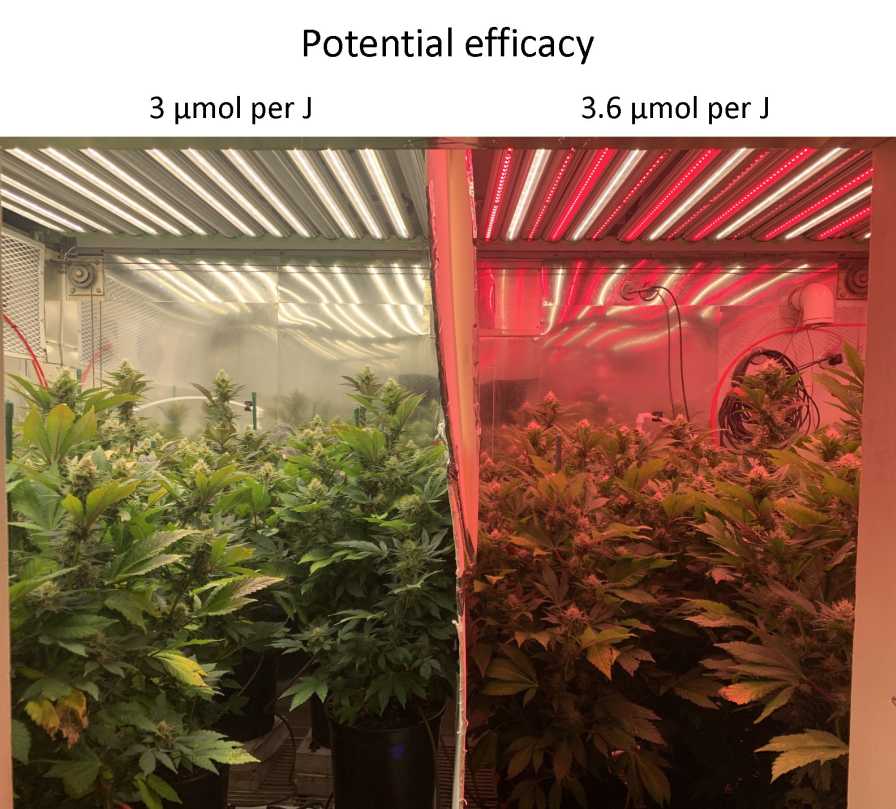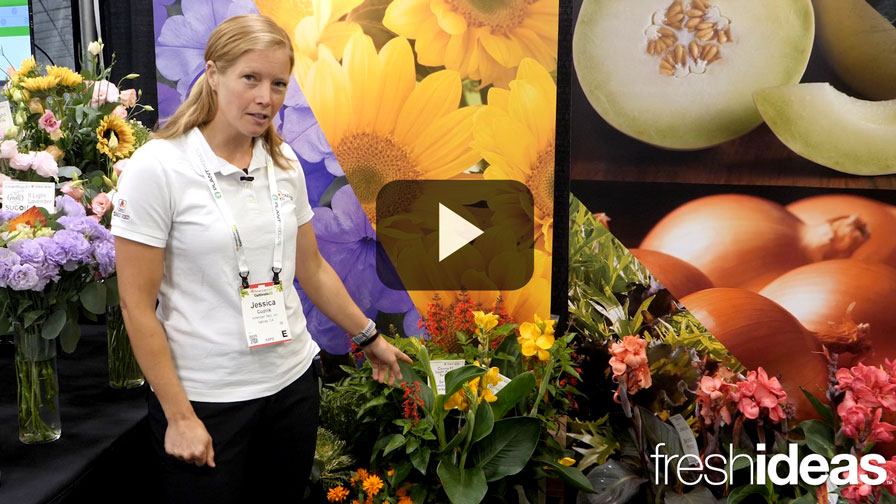Shedding Light on LED Tech for Cannabis Production
Photosynthesis and plant growth in the greenhouse are driven by photons, so the metric for LED performance in horticulture is not efficiency (watts of output per watt of input), but rather efficacy, which is the number of photons per second, per watt of electrical power. Since a watt is a joule per second, this simplifies to micro-moles of output per joule of electric energy (µmol per J).
We recently reviewed current and potential LED efficacy in a Nature-Horticulture article titled, “From Physics to Fixtures to Food.” The efficacy of double-ended high-pressure sodium (HPS) fixtures is 1.7 µmol per J, while the efficacy of LED chips can be astounding: up to 3 µmol per J for white LEDs and up to 4.8 µmol per joule for red LEDs. But efficacy decreases 10% to 50% when LEDs are mounted into fixtures due to losses in the power supply, high drive current, high temperature, and optical losses.
Weighing Efficacy Against Price
The DesignLights Consortium is a nonprofit, independent organization that maintains a list of horticultural lighting fixtures that meet its specifications, including high efficacy. As of November 2020, the highest reported fixture efficacy on its website was 3.69 µmol per J for a fixture with a deep-purple output from a combination of 4% blue and 96% red photons. This means that purple output LED fixtures can achieve double the efficacy of HPS, which further means that they use half the energy to produce the same number of photons. The best broad spectrum (white light) fixtures are 2.5 to 2.8 µmol per J and are about 50% better than HPS.
Lowering the electrical drive current increases fixture efficacy, but decreases the photon output per LED. In order to produce a high-intensity photon output, the total number of LEDs in a fixture must be increased, and some fixtures contain more than 2,500 individual LEDs. Unfortunately, this means that the initial price of the fixture is driven up by the material cost of the LEDs.
There is a tradeoff between efficacy, intensity, and initial price. Red (and far-red) LEDs have the highest efficacy, but these LED chips are about five times more expensive than white LEDs. The higher price of red LEDs is the result of small production volumes compared to white LEDs, which have a wide application in human lighting. This tradeoff between efficacy and initial price warrants careful consideration when purchasing fixtures.
To circumvent this tradeoff, fixture manufacturers often report that they have an optimized spectrum for plant growth and development. The colors (wavelength) of photons in horticulture can be categorized as ultra-violet (UV), blue, green, red and far-red. There is evidence that UV photons can increase secondary metabolites, but they have little value for photosynthesis; blue photons reduce leaf expansion and have low photosynthetic efficiency, but they can increase secondary metabolism (e.g., red pigment in leaves); green photons are photosynthetic and greatly improve human perception of plant color; red photons are well absorbed and are highly photosynthetically efficient. Although far-red photons increase photosynthesis and leaf expansion, they also increase stem elongation in many species. Manufacturers combine specific LEDs to obtain an optimized spectrum based on these principles.

The higher price of red LEDs is the result of small production volumes compared to white LEDs, which have a wide application in human lighting. This trade-off between efficacy and initial price warrants careful consideration when purchasing fixtures. Photo courtesy of Utah State University
Why Color Matters
Fixtures with blue, red, and far-red LEDs have high efficacy, but a low color rendering index for diagnosing growth and nutritional disorders and tiny insects. Green photons are produced through phosphor conversion via blue LEDs (phosphor-converted blue LEDs are white LEDs). LEDs that produce UV photons are improving, but are still less efficient than blue LEDs. LEDs with other peaks (e.g., yellow with a peak around 590 nm) are much less efficient and there is little evidence that they improve crop growth.
Spectral effects on plant shape are often more pronounced at lower light intensities, but yield is most reliably increased by increasing the intensity. Therefore, the ideal spectrum for a fixture has a high photon output per dollar (of initial price and electric cost). This may be achieved through a higher portion of red photons if the fixture is operated for 16 hours a day or more, but fixtures with more white may be preferred when operated for fewer hours due to the reduced initial price. Also, despite the lower efficacy, the lower initial price of double-ended HPS make them a competitive technology, especially in greenhouses where the sun provides most of the photons and the lights may only be operated 2,000 hours per year.
The addition of high efficacy far-red LEDs depends on the species. These photons are highly beneficial for lettuce, but we have found that the increased stem elongation is often undesirable in other species. Fixtures with only red photons could be used in greenhouses where the sun provides broad-spectrum photons, but some blue photons are necessary in plant factories. The research remains inconclusive as to the beneficial effects of UV-A LEDs. Our research suggests that these effects may be better achieved by increasing the fraction of blue LEDs. We recommend LED fixtures with about 10% blue, 20% green, and 70% red photons, with the possible inclusion of far-red for species like lettuce.
As the demand for unique horticulture LEDs (UV, red and far-red) rises, these products will decrease in price, lowering the overall initial cost of LED fixtures.








